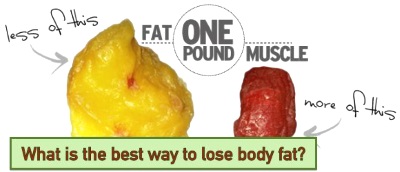Editor’s note: This article begins a series of informative health essays by Dr. David M. Prator, Jr., BS, DC, of Advantage Care Health in Morrison, IL.
 First of all, body fat is the second-most abundant substance in your body, ranging from 15-25% of your makeup, with water being the most abundant, at 70%.
First of all, body fat is the second-most abundant substance in your body, ranging from 15-25% of your makeup, with water being the most abundant, at 70%.
What can influence a person’s exact amount of body fat? Age, gender, genetics, diet, and exercise play a part.
On average, the typical U. S. citizen has more body fat than they should–although that is not inherent or inevitable. People that adopt lifestyle changes are able to control the age at which body fat will increase.
Males tend to have lower body fat averages (15%) than females (25%). It is thought to be so, because extra fat protects the mother from certain risk factors during a full-term pregnancy.
In the U. S., 30% of the population is “over-depositing” fat. Only about 5% of those cases are caused by rare mutations. So, it is also rare that parents pass along to their children the problem of “being too fat.”
It is a simple fact that protein and fats in bulk can make us put on extra weight, while the more bulky and fibrous foods (such as green leafy vegetables) can make us slimmer. If you feel too fat, eat less large amounts of protein and fats. Increase consumption of the green foods. Within days, a person will see slimming and feel less bloating and bowel distress.
Exercise is key to obtaining a good equilibrium, no matter what a person’s goal for their body fat percentage. It is certainly true that one pound of body fat weighs the same as one pound of muscle! However, muscle is much more dense. It takes up less space on your frame. Muscle also burns more calories per pound. This means that a person with higher amounts of muscle burns more calories–even as they sleep! Muscle mass helps keep us slim.
The photos illustrate a wide range of body fat percentages.
It is important that people exercise, specifically that they do muscle-building activities. This is, because the ultimate equilibrium for any body type is a low body fat percentage and increased muscle percentage. Find time to do some type of concentrated physical activity, that is strenuous enough to build muscle. Walking and running may be good for burning calories, but they will not significantly increase muscle mass along with calorie burning.


Eat better foods most of the time. Don’t blame family for making their kids fat, because of genetics.
Age and gender won’t make nearly as big a difference, if people simply abide by the first two suggestions above.
In article two, I will address some challenges that most of us face. These are due to global cellular inflammation, from not following the eating and exercise habits mentioned here. I will discuss how to get the body back on track to heal itself and get back to a state of “anti-aging.”
